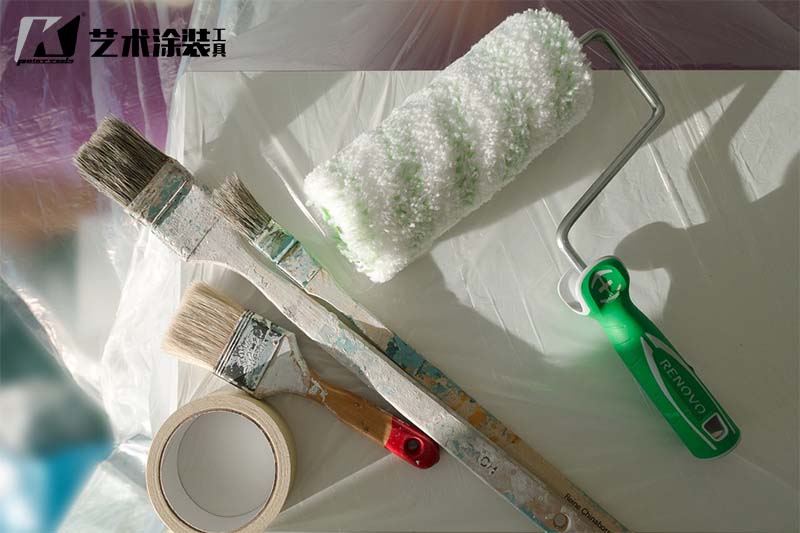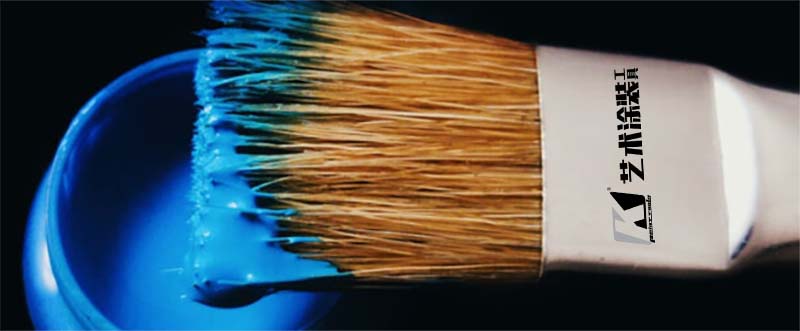The right painting tools, suitable brushes and paint rollers

walls paint
The right tool is crucial in any craft. Of course, it often depends on talent and experience. But with the right painting tool, the first step is already ticked off. How you find the right tool for painting depends on your requirements and the circumstances.
Paint rollers with fluffy rollers, hairy brushes and spilling paint. This will certainly not result in a satisfying result. The price in particular is a decisive factor in the wall paints and painting tools industry.
Cheap paint, paint rollers and brushes are usually made from inferior materials. It's probably worth digging deeper into your wallet. "Quality wins" is the motto here. Of course you can also be lucky with cheaper tools, but our experience shows that quality has its price, especially with painting tools.
Any brush will shed a few hairs at first, but with longer strokes you will feel the durability. Wall paint experts swear by quality brushes and paint rollers when it comes to interior walls. After all, you can see the result very precisely there. This is less noticeable on a rough exterior facade.
Paint roller or brush? That is the question…
There is a simple rule of thumb:
Large wall surfaces = paint roller
Small wall surfaces = brush
That doesn't sound all that difficult. Brushes are particularly good for painting in corners and cracks. For smaller painting jobs or angled areas, you therefore use a brush. Paint rollers and rollers have their specialty in large areas.
Usually you need both painting tools to paint the wall ideally. After all, we all have these stupid heaters, window sills and sockets.
The right color roller
Usually the manufacturer of the wall paint & ceiling paint gives us a specific recommendation. (Of course, this is a paint roller of the same brand.) In general, one can say that the paint roller should be made of "lambskin". This absorbs the colors best and doesn't drip everything.
Before you start painting, you should ALWAYS use a scraper grid. This grid rids the roll of excess paint. Without a scraper grid, dried drops of paint will definitely form on the wall. And nobody really wants that.
When it comes to painted surfaces, the recommendation is always a small foam roller. Soak this roller evenly in the paint and then paint evenly.
Brush and the right shape
Brushes are both round and flat. There are the following rules for this:
Flat Brush = Large "brush" areas
Round brush = Fine "brush" surfaces and edges.
The "radiator brush" is particularly good because it is relatively versatile due to its long handle.
The right material of the brush
The good brushes, brushes & tassels are available with natural bristles as well as synthetic fibers. Personally, I'm a fan of natural bristles.
Brief introduction here on the subject of acrylate paints and synthetic resin-based paints:
Always apply acrylic paints with synthetic bristles, as natural bristles absorb too much water.
Synthetic resin-based paints with alcohol, paint thinner or lacquer thinner are best applied with a natural bristle brush.
Basically one can say:
Natural bristles absorb moisture better than synthetic ones.
Before using for the first time, all brushes should be washed out thoroughly;
Take care of your brush because, like an old wine or cheese, it just keeps getting better;
The bristle tips become round and adapt to a wall;
If you work with solvents, use brush cleaner or universal thinner afterwards
Never dry your brushes on the bristle tip, otherwise ;
deformations occur. It is best to hang up the brush where it will not drip.

The right material of the brush
The good brushes, brushes & tassels are available with natural bristles as well as synthetic fibers. Personally, I'm a fan of natural bristles.
Brief introduction here on the subject of acrylate paints and synthetic resin-based paints:
Always apply acrylic paints with synthetic bristles, as natural bristles absorb too much water.
Synthetic resin-based paints with alcohol, paint thinner or lacquer thinner are best applied with a natural bristle brush.
Basically one can say:
Natural bristles absorb moisture better than synthetic ones;
Before using for the first time, all brushes should be washed out thoroughly;
Take care of your brush because, like an old wine or cheese, it just keeps getting better. The bristle tips become round and adapt to a wall;
If you work with solvents, use brush cleaner or universal thinner afterwards;
Never dry your brushes on the bristle tip, otherwise deformation will occur. It is best to hang up the brush where it will not drip.
My conclusion on the right painting tools
With a certain amount of background knowledge, you can quickly decide which type of painting tool you need. The area of the wall to be treated provides information about whether you use a brush or paint roller. You choose the material based on the colour.















